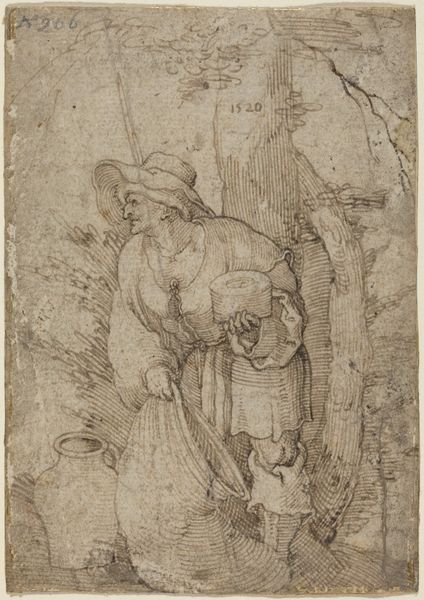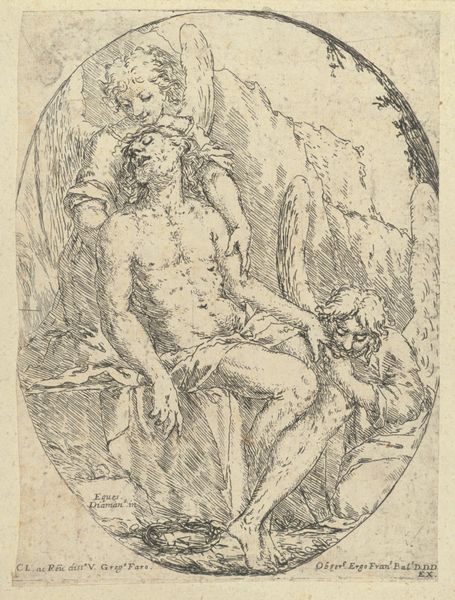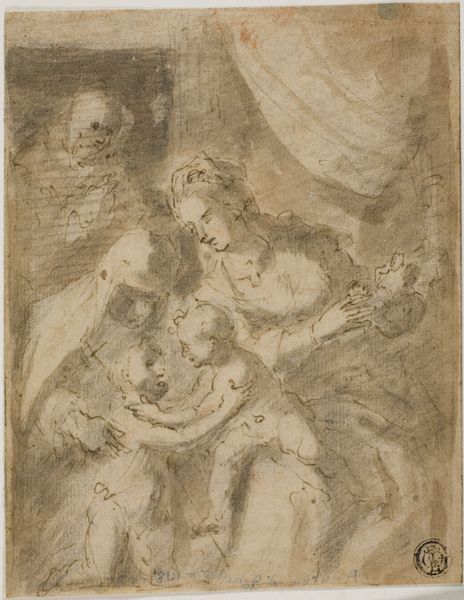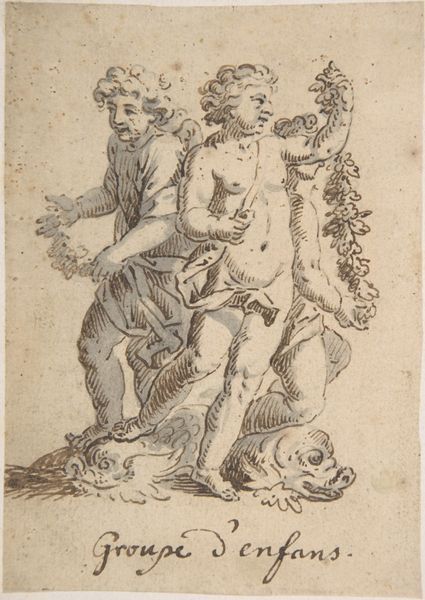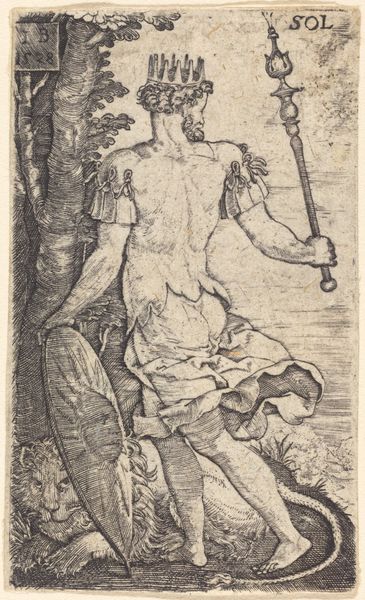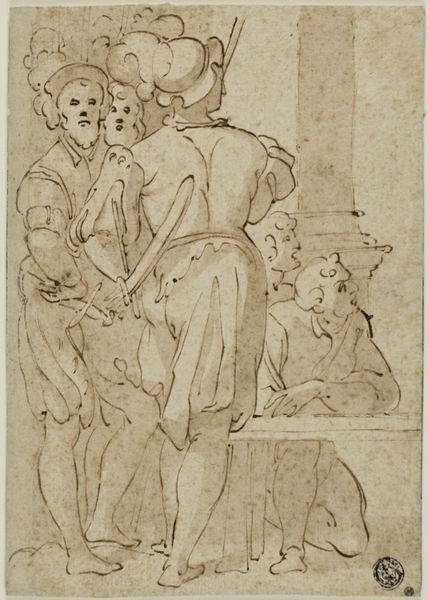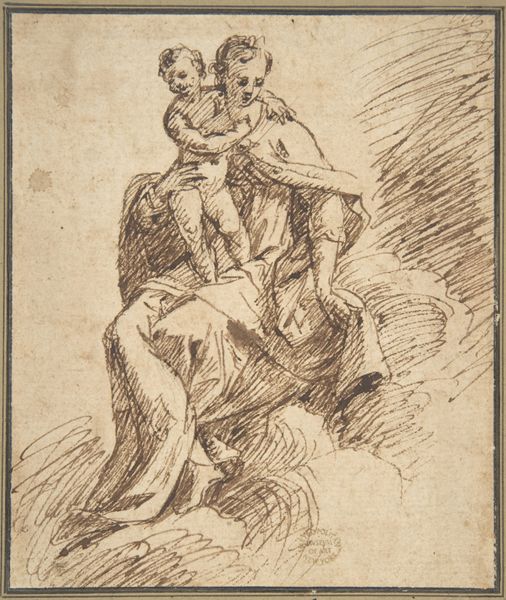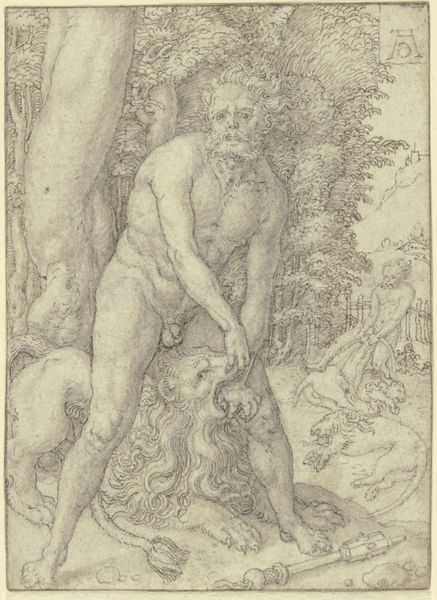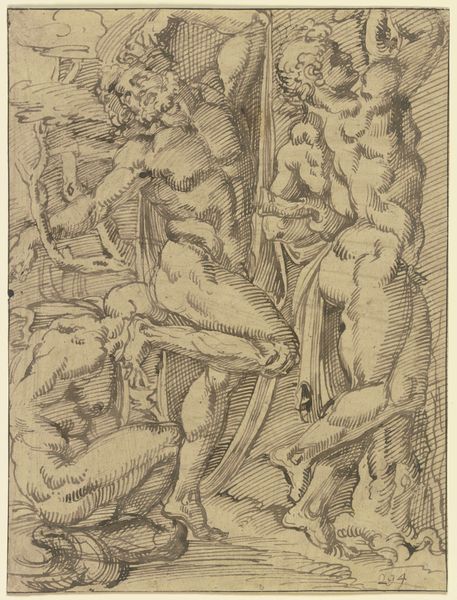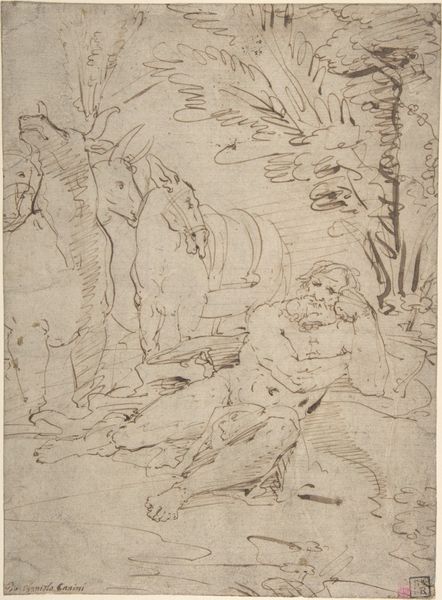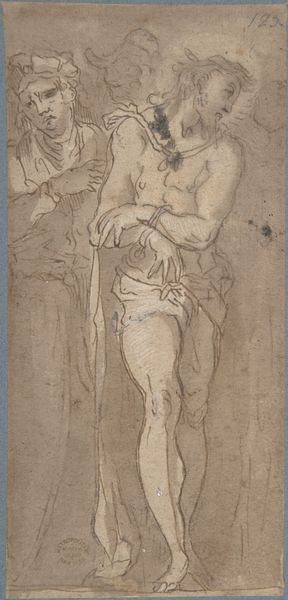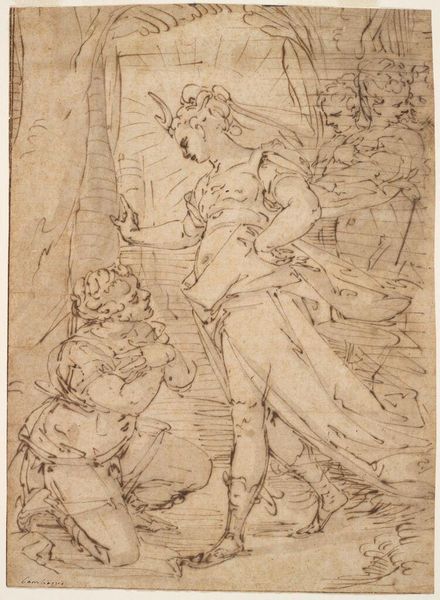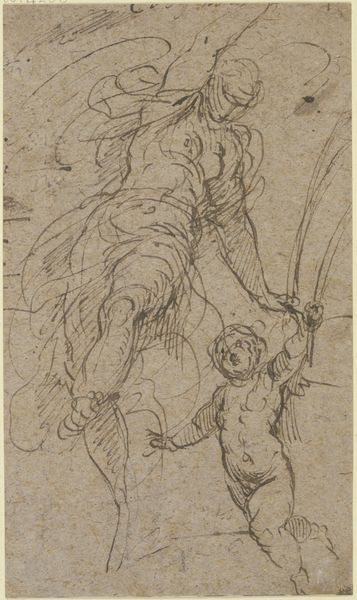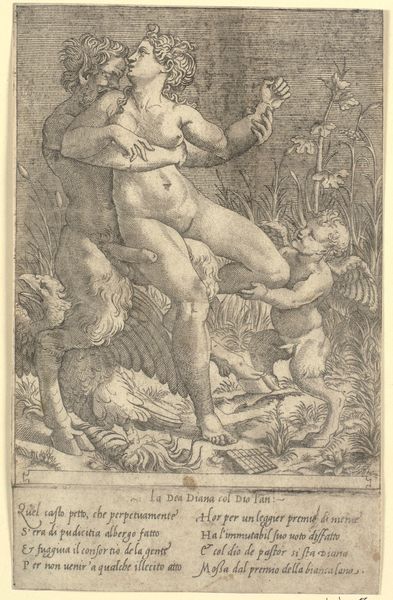
drawing, print, engraving
#
drawing
#
medieval
#
narrative-art
# print
#
figuration
#
11_renaissance
#
musical-instrument
#
engraving
Dimensions: 3-3/4 x 2-7/8 in. (9.5 x 7.3 cm)
Copyright: Public Domain
Editor: Here we have "Orpheus Playing to the Animals," an engraving dating from 1515 to 1525. It’s quite small and intricate, and I'm struck by the almost playful quality of the scene. What’s your take on it? Curator: Let’s consider the material conditions of its creation. Engravings like this were relatively accessible prints; how might that availability shape its reception? The line work feels very precise. Can you see the distinct cuts and how they form the image? Editor: Yes, I can see that now that you mention it. There's a real emphasis on line and form. Did the medium influence the style and what kinds of workshops or production processes might be involved in its making? Curator: Absolutely. The engraver would’ve needed specialized tools, specific training and we can see that they likely mastered craft techniques. Also the material used - metal plates for this printing, points to wider issues of economy, extraction, and accessibility for circulating stories of myth through a repeatable, and purchasable image. Consider that as opposed to unique paintings commissioned by elites, this allows for much broader engagement with the Orpheus myth, right? Editor: That makes sense. So, the materials and method democratize the myth. Instead of thinking just about artistic expression, you're making me consider distribution and consumption too. Curator: Precisely! It disrupts this binary that some want to push – ‘fine’ art versus ‘craft,’ or ‘original’ art vs reproductions. Those categories break down here. What would you consider it after this new perspective? Editor: Definitely gives me a new appreciation for this piece – thinking beyond just what it depicts. It's really thought-provoking!
Comments
No comments
Be the first to comment and join the conversation on the ultimate creative platform.
